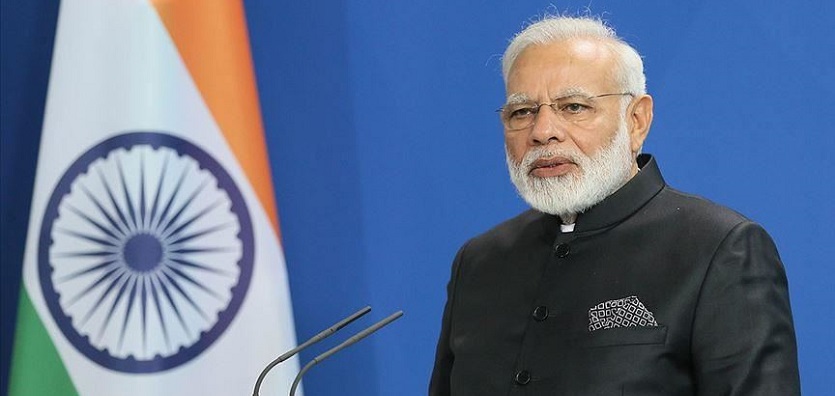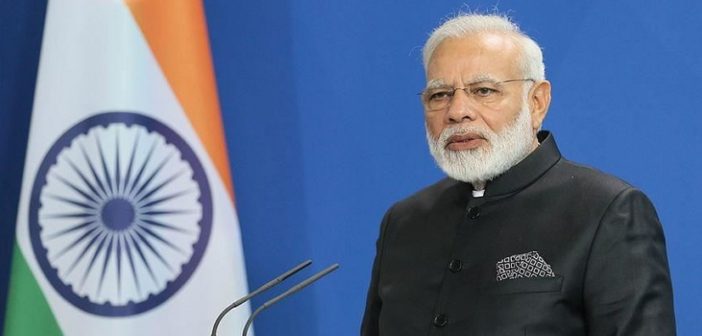
 As India grapples with the prospect of almost a fourth of its population of 1.3 billion sinking into poverty due to the economic fallout of Covid-19, the country is wisening up to the fact that while it has been singularly incapable of redeeming their plight, it is defraying much of its resources towards catering to the most expensive Prime Minister in its history.
As India grapples with the prospect of almost a fourth of its population of 1.3 billion sinking into poverty due to the economic fallout of Covid-19, the country is wisening up to the fact that while it has been singularly incapable of redeeming their plight, it is defraying much of its resources towards catering to the most expensive Prime Minister in its history.
For someone given to frequently evoking his impoverished childhood, Prime Minister Narendra Modi clearly did not foresee the catastrophe befalling the country’s teeming poor when he came on television at 8 pm on 24 March to announce that the first nationwide lockdown, of 21 days, would begin that midnight, in four hours.
In one fell swoop, the country’s 500 million daily wage migrant workers, who have no job or social security, lost their livelihoods as their workplaces shut abruptly, were evicted by landlords who feared rent defaults, and were stranded as all transport stood withdrawn.
Their crisis exacerbates India’s struggle against the virus. The projection of the 260 million newcomers to poverty has been jointly made by the UN Development Programme (UNDP) and Oxford Poverty and Human Development Initiative (OPHI). India has the highest number of poor globally, identified as those living on less than $2 a day.
While the nation was mortified by images and news of police brutalities against the migrants for venturing out in search of transport, the budgetary allocation exclusively for the Prime Minister’s personal security was raised by 11 per cent, to $78 million for the current year, or $213,700 a day. This represents a doubling of the budget, from $38 million, in 2014 when Modi came to power and when this allocation covered the previous Prime Minister, his family and other select politicians.
The $78 million covers the upkeep of the elite 3,000-strong Special Protection Group (SPG) dedicated to the incumbent Prime Minister. Some 500 of them protect Modi’s official residence round the clock, armed with FN F2000 NATO bullpup rifles, automatic guns and Glock 17M duty pistols.
Modi, however, feels the need to shift to a grander setting and a new outstanding house for himself is part of his initiative of a complete redesigning of the magnificent Parliament vista in New Delhi established during colonial times. Estimated to cost $2.6 billion, the planned revamp is one of the most ambitious government projects, entailing construction of a new Parliament House to replace the current iconic colonnaded structure built in 1931, as also 10 new government office buildings that will replace existing ones earmarked for demolition. The imposing and symmetrical North and South Blocks, which house the Prime Minister’s Office and some key ministries, will become museums.
Modi’s another dream project has been a similar ‘makeover’ of his Parliamentary constituency, the living heritage city of Varanasi. Under the $80 million plan to make this ancient holy city on the banks of the Ganga river more ‘tourist-friendly’ and easily accessible to visiting dignitaries, hundreds of ancient temples and heritage residences and shops, some up to 300 years old and meandering along idyllic lanes and bylanes, have been demolished, displacing thousands of townspeople.
Yet another brainchild of the Prime Minister has been the ‘bullet train project’ connecting Ahmedabad, the financial capital of Gujarat state that he was chief minister of, from 2001 to 2014, and Mumbai. Work on the $14.5 billion project began in 2017 and once complete, the 508 km distance was expected to be covered in two and a half hours, compared to the present six and a half. Masses are being displaced as farm and forest lands, mangroves, and residential and commercial enclaves are being acquired to pave the way for this project. However, a one-way ticket will cost $40, whereas air travel between the two cities takes an hour and a half and costs far less. Besides, present train fares for the route range between $2.40 and $4.
Modi also frequently recalls his ‘ascetic’ roots, typified by renunciation and abstinence. “I quit everything very early in life… and my training was such that I gave up all ties,” he says. But while he disowned his family, in a meeting with then visiting US President Barack Obama shortly after he became Prime Minister, Modi turned out in a monogrammed Indian-styled suit that subsequently entered the Guinness World Records as “the most expensive suit sold at an auction” (for around $570,000).
Thus, when in his latest address to the nation on 12 May, Modi urged people to seize the opportunity presented by Covid-19 to become self-reliant and shun foreign goods so that Indian businesses would prosper, the social media erupted with derision, generally commenting: “There is a man on TV who wears only [German handmade] Maybach sunglasses and [Swiss-made (now American)] Movado watches and writes only with [German] Mont Blanc pens, and who is driven only in [German] custom-made bullet-proof BMW cars who is telling us that we should buy local.”
Besides, while previous Indian governments requisitioned a B747 aircraft from Air-India’s fleet for air travel by the Prime Minister, President and Vice President, the Modi government has ordered two new B777-300ER planes from Boeing at a cost of $1.2 billion for their exclusive use. Their delivery scheduled for July, these aircraft will have state-of-the-art missile defence systems that are supposed to render them as safe as the US President’s Air Force One B747-200B.
And while the fate of millions of the traumatised migrants hangs by a thread, comes news that the 59 overseas visits made by the Prime Minister between 2014 and a year ago have cost the state exchequer $60 million. Parliament was informed that the amount was set to rise as bills for Modi’s additional visits in the last one year were yet to come in.






